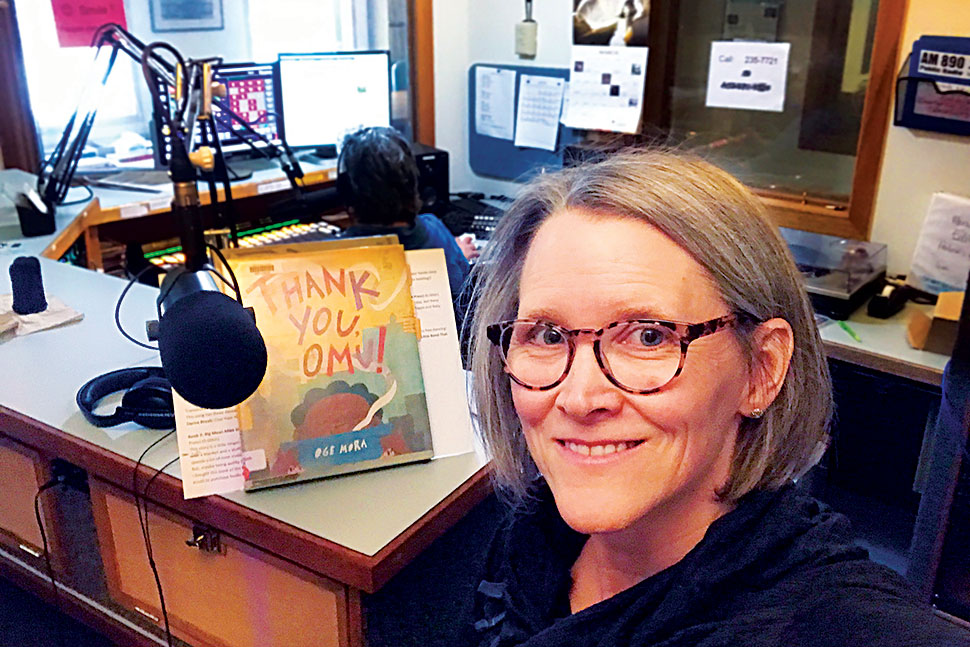
Early last year when Americans were advised to stay home to prevent the spread of the SARS-CoV-2 virus, libraries had to consider new ways to connect with the communities they serve. Most libraries already had an online presence pre-pandemic, and many offered virtual programming, providing a vital lifeline to the library for patrons sheltering in place. With such attention devoted to digital engagement, however, a new problem emerged: how to reach and support those who don’t have access to Wi-Fi, the internet, or even a device that can connect online.
“The pandemic has highlighted the barriers to access that many people have regarding technology and reliable internet,” says Kathleen Montgomery, outreach manager at Charleston County (S.C.) Public Library (CCPL). “It’s our mission to address these inequities.”
To do so, libraries across the US have implemented creative concepts and partnerships that embrace analog technologies and platforms.
Outreach over the airwaves
Partnerships with radio and television outlets have helped some libraries reach their communities. Houston Public Library (HPL) connected with local station KHOU-TV Channel 11 in June 2020 to launch a summer educational program for children called HPL Liftoff to Learning, a series of five-minute-long, library-themed episodes that included storytimes, game suggestions, educational crafts, and family activities.
“Liftoff to Learning serves as a model approach for partnerships with libraries, one that can be replicated in other communities across the country,” says HPL Deputy Director Nicole H. Robinson.
The partnership has certainly elevated the library’s profile: Robinson reports an audience of more than 24 million television viewers over the course of the program’s 12-week run, and that number jumps to 89 million when social media is factored in. That figure is 61 times the number of registered card users the library has, according to Robinson.
Up north, Homer (Alaska) Public Library has found a similar solution. In collaboration with KBBI-AM 890, the library presents an hourlong radio storytime every Thursday. It has presented an opportunity to both support early literacy and keep families connected, says Youth Services Librarian Claudia Haines, adding that the “combination of old and new technology” allows the library to reach families who weren’t able to visit the library pre-pandemic. That’s especially important in communities like hers, where geographical challenges such as difficult terrain and limited roads already kept many from accessing the library before the pandemic.
Stories by phone
Back at CCPL, Montgomery and other staffers are connecting with patrons through the library’s Dial-a-Story program, which was implemented in September 2020 to share short stories, poems, and book excerpts for kids and adults by phone. “Listening to a story helps to engage everyone in literacy,” Montgomery says. “Even if it’s passive listening, it engages your brain and has great benefits in your reading and vocabulary.”
A phone-based storytime program is easy to implement and maintain, says Montgomery. CCPL staff members call in to the library each Monday and record new stories on a voicemail system, which can be accessed from a number listed on the library’s website, social media channels, and fliers posted in CCPL branches. The voicemail system also allows listeners to leave feedback for readers or suggestions for future storytimes.
Storytime over the phone isn’t a new concept—the program is in use in libraries across the US—but it has proved to be a success during its short life so far at CCPL. “Since its inception, we’ve had almost 1,000 calls to our Dial-a-Story line,” Montgomery reports. “It’s here to stay.”
Pocket-sized support
When advocacy groups and social service organizations in Kansas City, Missouri, were no longer able to use the library for in-person outreach during the pandemic, Kansas City Public Library’s (KCPL) role in supporting the community’s most vulnerable also had to be reimagined.
Enter the Community Street Sheet—a printed reference guide listing community services for people experiencing homelessness, such as shelters, meal providers, and medical assistance. The handout is updated weekly and distributed by more than 200 organizations, including social service providers, community agencies, and police.
During the pandemic, KCPL’s Street Sheet has included information on how to keep healthy, where to find medical attention if experiencing COVID-19 symptoms, and the locations of restrooms and hand-washing facilities. Street sheets are in use in other cities across the US as well.
“We wanted to make sure we could still provide information to those on the street,” says KCPL Outreach Community Engagement Specialist Kelly J. Berry.
KCPL started its Street Sheet in collaboration with the Kansas City Coalition to End Homelessness and other social service agencies, and the project was selected for the Urban Libraries Council’s Top Innovator award in its inaugural year.
“For our population experiencing homelessness to be recognized as patrons, to see a resource created for them, and for it to be recognized as such a valuable resource, that was really something,” Berry says. “We’re proud to be part of it.”
While it’s still unclear when in-person library services across the country will fully return, one thing is clear: nondigital technologies and old-school methods are proving their worth under remarkable circumstances. And more important may be the lessons learned in creating this content.
“It’s a good thing for kids to see adults overcoming hurdles,” Haines says. “And that’s what we’ve all been doing all year.”
Correction, June 16: Charleston County Public Library is in South Carolina.

